THE HIMALAYAS
Sagarmatha~ Mount Everest
Article by Mina Thevenin
Photography by Sirish B.C. (CLICK on any image to view photography as a slideshow.)
Sagarmatha in Nepali is written beautifully as
 सगरमाथा. Its meaning is sky head(1). It is 60 million years old and is the highest peak on earth, towering above the Himalayan Mountain Range at 8,848 m (29,029 ft. or five and a half miles) above sea level. The Tibetan name is Chomolungma which means “Mother Goddess of the Earth.” Many of us know it as Everest or Mount Everest. It is Sagarmatha: Our Elephant of the World.
सगरमाथा. Its meaning is sky head(1). It is 60 million years old and is the highest peak on earth, towering above the Himalayan Mountain Range at 8,848 m (29,029 ft. or five and a half miles) above sea level. The Tibetan name is Chomolungma which means “Mother Goddess of the Earth.” Many of us know it as Everest or Mount Everest. It is Sagarmatha: Our Elephant of the World.
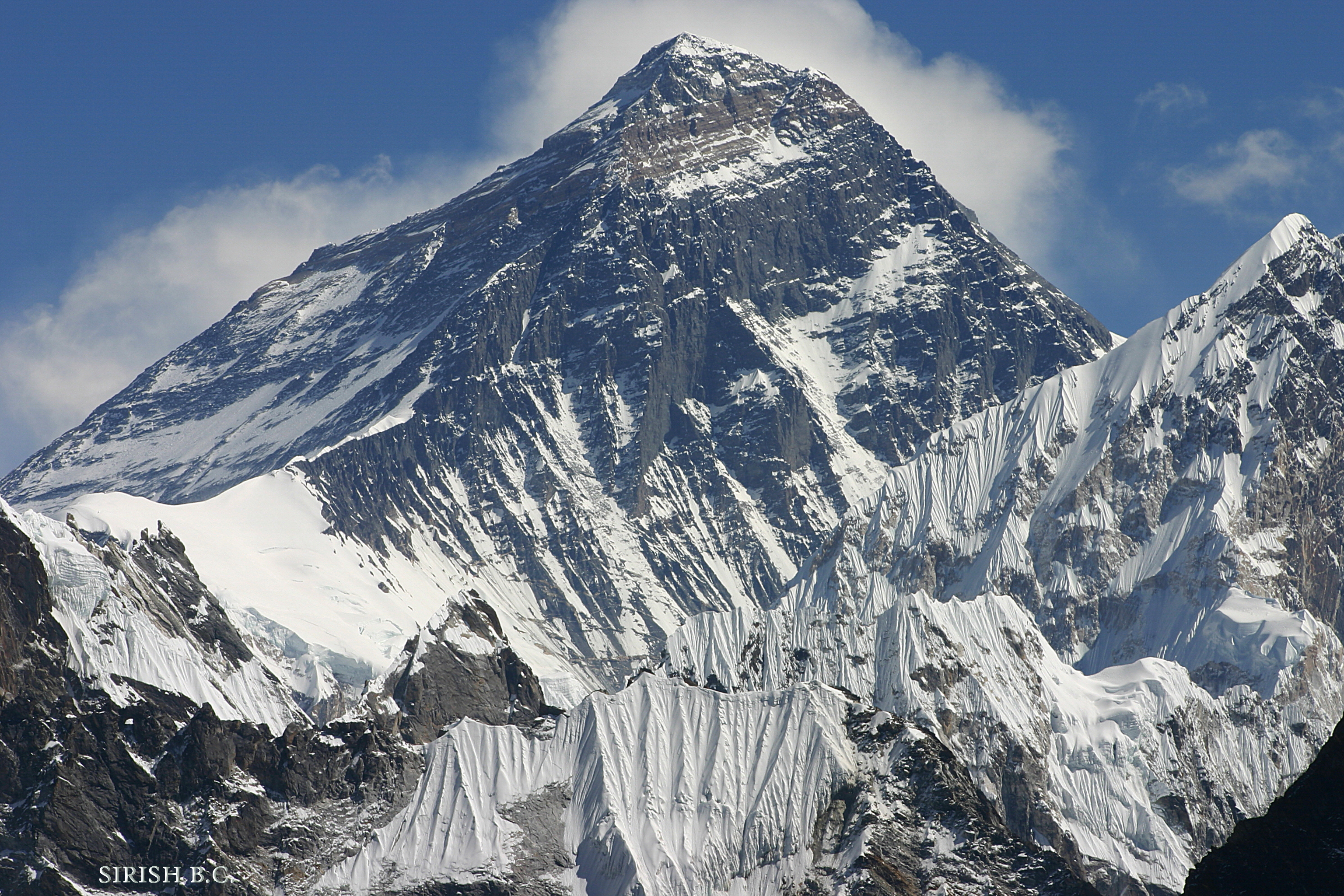
Sagarmatha National Park formed in 1976 and in 1979 it was granted inscription into the UNESCO, the United Nations Educational, Scientific and Cultural Organization (UNESCO), under criteria vii: to contain superlative natural phenomena or areas of exceptional natural beauty and aesthetic importance. (2) UNESCO ideology states:
UNESCO seeks to encourage the identification, protection and preservation of cultural and natural heritage around the world considered to be of outstanding value to humanity. This is embodied in an international treaty called the Convention concerning the Protection of the World Cultural and Natural Heritage , adopted by UNESCO in 1972.
The Himalayan range is actually the youngest mountain range above sea level. Sometimes we think of the biggest as the oldest, but actually, the Appalachian Mountain belt of North America is carbon dated to be the oldest mountain range in the world and it is estimated to have begun formation approximately 480 million years ago (3). The Urls of Western Russia are the second oldest mountain belt, aka the Stone Belt, and are dated to be 250 to 300 million years old (4). Age aside, the Himalayas boast to be the home of the world’s highest peak above sea level, Sagarmatha.
After the world’s two polar regions- Antarctica and the Arctic, the Himalayas have the third largest deposit of ice and snow in the world with 15,000 glaciers; Khumbu glacier is within the Everest region. It is dotted with hundreds of lakes below the 5,000 m range. Its year-round snow line is rather high at 18,000 ft./5500 m, which enables the mountainous region to support a rich biodiversity! Climate ranges from its tropical and subtropical base strip of the outer Himalayas (1,600-3,300 foot level) where it is home to tigers and Asian elephants, including over 300 different bird species, to the temperate Broadleaf and Mixed Forests in middle elevations of 6,600 to 9,800 ft., providing home to over 500 bird species and the beautiful golden langur monkeys.
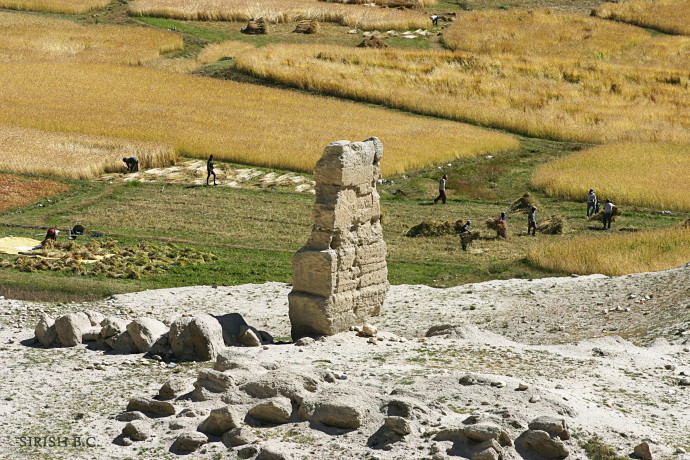
A Coniferous Forest zone at an elevation of 8,200 to 13,800 ft. (1.5 miles to 2.5 miles) is buffered by the mountains from the heavy monsoon seasons of June through September; endangered (due to deforestation) red pandas, as well as other mammals and birds make home at this elevation where they live among the spruce, fir, pine and hemlocks. The Montane Grasslands and Shrublands of meadows (with rhododendron) and alpine shrubs are found from 9,850 to 16,400 ft.; the elusive snow leopard makes its home here, along with other mammals and birds (5). Percentage wise, all of this biodiversity happens in a relatively small scale of the huge mountain range! The forested region of the mountain is 3 percent, with 28 percent grazing land. The higher elevation is the majority of the belt, consuming 69 percent of the great mountain range. Here the Himalayas are barren. UNESCO stats
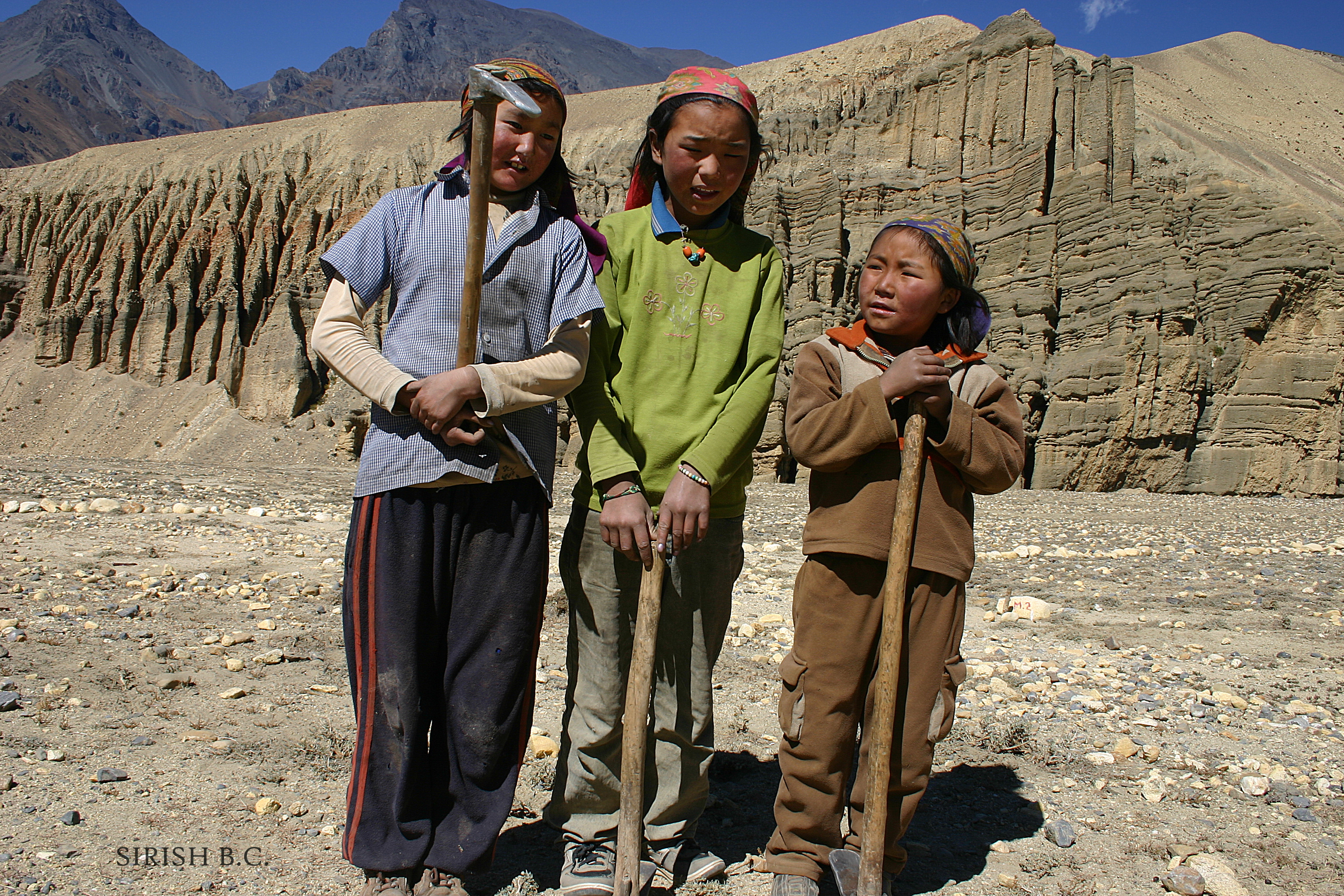
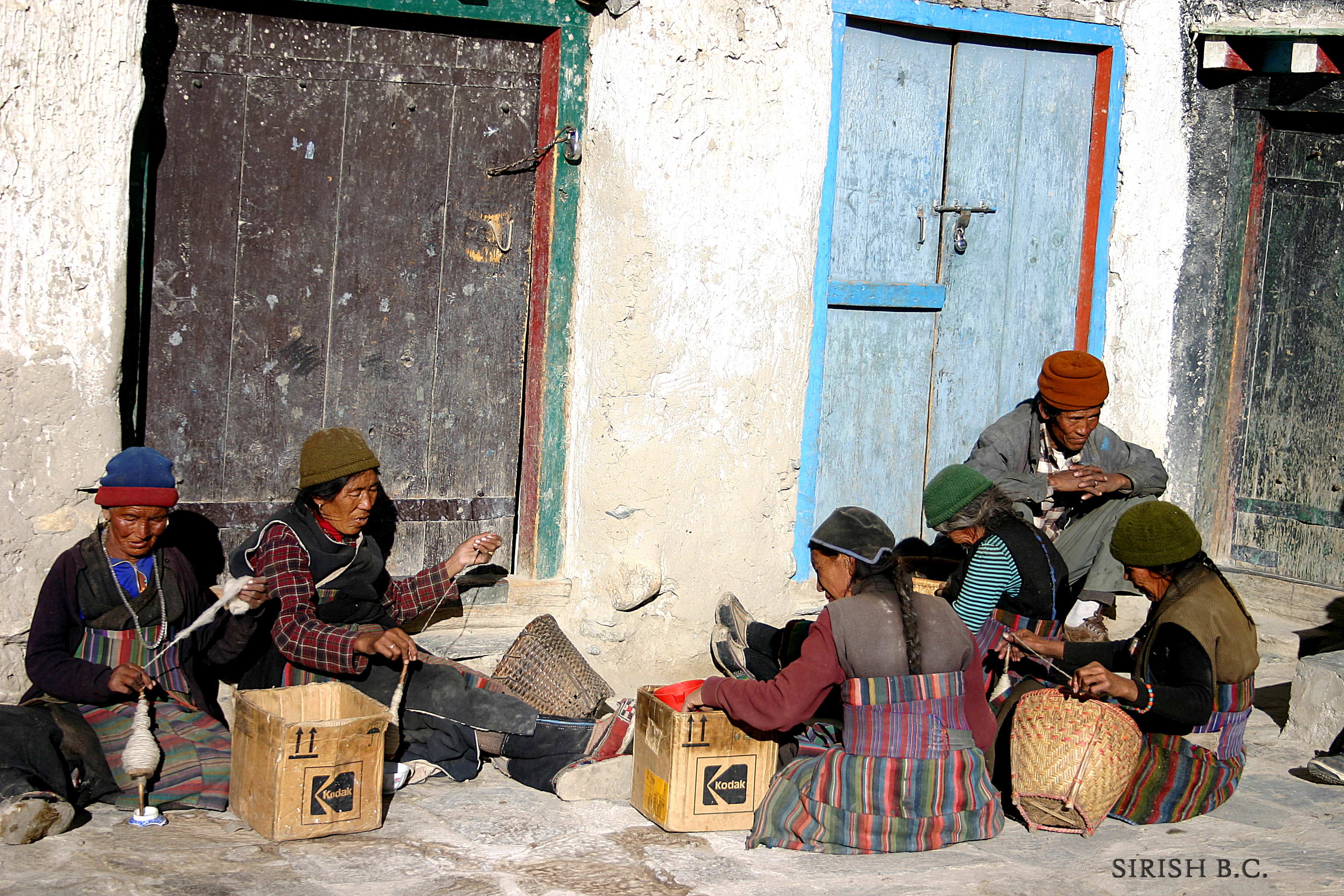
Nepalese people consider the mountain to be sacred and practice prayer rituals in their relationship to the mountain, especially before mountaineering season begins which is usually in May when the Jet stream is at its calmest: 20 mph (32 kph) versus 100 mph (161 kph) winds. Good karma helps for good and safe mountaineering. Who are these Himalayan people of this vast mountainous region? There are five countries with numerous ethnic groups who geographically share the Himalayan belt. Only three of these five countries are visible from the summit of Everest: Nepal, Tibet, and India.
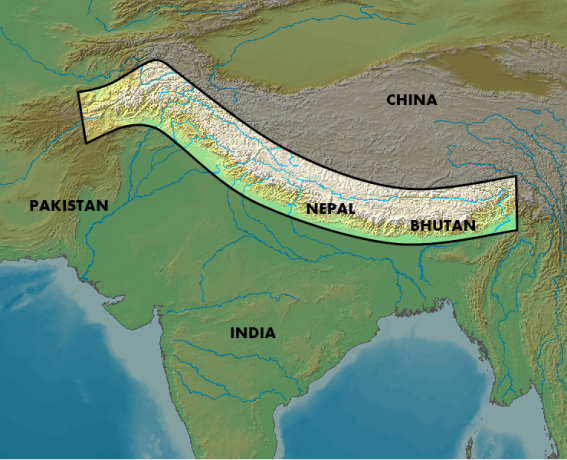 Nepal surrounds the mountain low range and midlands; Nepal’s capital is Kathmandu. To the west and south beyond Nepal is India, and Pakistan lays beyond Nepal further west & north. Tibet, within the boundaries of China since the mid 1950’s, is to the north of the Himalayas. There is also the country of Bhutan slightly to the southeast of the Himalayan belt but it is not visible from Mount Everest’s summit. The main religious practices of the region are: Buddhism, Hinduism, Bon (predates Buddhism), and blends of these religions. Although there are other religions, these three make up the majority of religious traditions. The Sherpa people, primarily Buddhist, are most well-known by the world because of their well publicized history as guide mountaineers dating back to the 1950’s. A population of over 2,000 Sherpas live within the SNP boundaries, closest to Everest. But Sherpas are just one of more than a dozen ethnic peoples who migrated from the ancient East and regions of early Tibet into Nepal. For brevity of this article, only Nepal and Tibet’s Himalayan peoples are mentioned, though groups not cited here do not reflect less importance.
Nepal surrounds the mountain low range and midlands; Nepal’s capital is Kathmandu. To the west and south beyond Nepal is India, and Pakistan lays beyond Nepal further west & north. Tibet, within the boundaries of China since the mid 1950’s, is to the north of the Himalayas. There is also the country of Bhutan slightly to the southeast of the Himalayan belt but it is not visible from Mount Everest’s summit. The main religious practices of the region are: Buddhism, Hinduism, Bon (predates Buddhism), and blends of these religions. Although there are other religions, these three make up the majority of religious traditions. The Sherpa people, primarily Buddhist, are most well-known by the world because of their well publicized history as guide mountaineers dating back to the 1950’s. A population of over 2,000 Sherpas live within the SNP boundaries, closest to Everest. But Sherpas are just one of more than a dozen ethnic peoples who migrated from the ancient East and regions of early Tibet into Nepal. For brevity of this article, only Nepal and Tibet’s Himalayan peoples are mentioned, though groups not cited here do not reflect less importance.
Into Nepal
Migrating from the East, the Brahmin/Chhertri peoples are the largest group in Nepal and are an influential Hindu caste system within Nepal farmlands; they live across the middle section of the Himalayan foothills. Their main language is the nation’s language, Nepali. Bhotiya are a high-altitude peoples; bhotiya is derived from the word meaning, “from Tibet.” They speak many dialects and live in the north and eastern parts of Nepal. They pracatice Tibetan Buddhism and Hinduism. Gurung or Tamu peoples comprise less than 3 percent of Nepal. Historically they participated in British armies and today continue in a rich cultural heritage. Their religious practices include: Hinduism, Buddhism and Bon. Lhomis are a farming people of Nepal and their main religious practice is Buddhism. Limbu, also known as Kirati, also settled into Nepal from Tibet centuries ago. They practice Bon with oral scripture and traditions influenced by Buddhism. Historically this group was known as a people who were great archers. The Magars identified as a Nepalese ethnic group, but to date there is minimal history about them. Newar or Newa ethnic group of Nepal’s Kathmandu valley is a group known for merchant skills, artisan and culinary skills. Their religious practices are either Buddhism, Hinduism, or a blend. Historical references date the Newar peoples of Nepal back 1,000 years. Rai, once a part of Kiratis ethnic group, makes up a small 3 percent of Nepal’s population, and like Newar, it is believed to be steeped in a long history. Kathmandu’s reach of 5-7,000 ft. to its surrounding foothills is the Tamang ethnic group. A Buddhist following, Tamang is historically known as “horse people”. Like many of the other groups, Tamang makes its own wool clothing, baskets for portage and storing of goods; they are builders and farmers. Thakali have old Tibetan ties; they make up a small ethic group in Nepal, but are well-known for their good business practices.

TIBET
Then there is Tibet. Is there an elephant in the room when it comes to the great Sagarmatha? Similar to many regions, there are political, environmental, and economic concerns, the latter of which includes limited education and medical treatment opportunities.There is the history of political strife, as all regions have, and this beautiful area of the world is no exception. Fifty-six years ago in March, Tibet experienced political exile of a hundred thousand Tibetans. Among them was His Holiness the Dalai Lama. It was on March 17th, 1959, that the twenty-four year old 14th Dalai Lama secreted away and escaped from his home country, dressed as a military soldier. Tibet was no longer a safe home for them due to a decade long deterioration of religious freedoms, which developed when Communist China invaded the independent country in the early 1950’s.
I was fortunate to hear His Holiness speak at a conference in 2013, Engaging Compassion. As true to H. H. the Dalai Lama’s sentiment of peaceful inclusion, not exclusion, he addresses the elephant in the room in an interview on his website. (6)
Question: Do you think you will ever be able to return to Tibet?
.
Answer: Yes, I remain optimistic that I will be able to return to Tibet. China is in the process of changing. If you compare China today to ten or twenty years ago, there is tremendous change. China is no longer isolated. It is part of the world community. Global interdependence, especially in terms of economics and environment make it impossible for nations to remain isolated. Besides, I am not seeking separation from China. I am committed to my middle-way approach whereby Tibet remains within the People’s Republic of China enjoying a high degree of self-rule or autonomy. I firmly believe that this is of mutual benefit both to the Tibetans as well as to the Chinese. We Tibetans will be able to develop Tibet with China’s assistance, while at the same time preserving our own unique culture, including spirituality, and our delicate environment. By amicably resolving the Tibetan issue, China will be able to contribute to her own unity and stability.
This “delicate environment” is impacted by global warming changes and our biggest threat to Sagaramatha, ourselves. Deforestation and extraction of other natural resources, like mineral mining without protective planning and rebuilding/replanting, destroys the region over time. Glaciers melt, previous water boundaries are broken, and regional flora and fauna are effected, but also effected are the peoples of Himalaya. So beyond the changing shape of bodies of water and their struggling ecosystems, our own demanding footprints that fall under the name of development without regulation and planning are creating the greatest losses to Sagaramatha region.
Last year in the spring of 2014, the Nepalese government became proactive! Their biggest income comes from tourist fees: trekking, mountain climbing, and hotels. What does the tallest mountain have a lot of from all these would-be climbers? Trash. That’s right, the trash has been piling up on Mount Everest since the first climbers back in the 1950s. A snapshot of climber trash looks like discarded oxygen cylinders and paraphernalia, broken and torn tents, food wrappers, and broken equipment. The government will begin to enforce their new policy, “We are not asking climbers to search and pick up trash left by someone else,” said Maddhu Sudan Burlakoti, head of the mountaineering department at the Tourism Ministry. “We just want them to bring back what they took up.”
Trash per climber is estimated to be about 18 pounds per person. (7) So how much trash are we talking about? A rough estimate of slightly over 6,871 people have summitted since the original documented Everest summit of Sherpa Tenzing Norgay and Sir Edmund Hilary in 1953. (56 percent attempting the summit today, are successful according to 2012 stats.) (8) Nepal’s south side is the more popular climb with 4,416 summits, while Tibet’s north side records 2,455 summits. Of 6,871 we subtract the sherpas who have had multiple climbs, this leaves a total of 4,042 different climbers according to the Himalayan database (9) and the statistics, much of which has been contributed by American born writer, Elizabeth Hawley (age 92), who moved to Kathmandu in 1960 and never returned home to the states. (10) If the Nepalese Department of Tourism Ministry calculates that 18 pounds of trash per climber needs to be brought down, but it hasn’t been enforced as of spring 2014, the simple math means that a possible 72,756 pounds of trash remains. What would that visual look like? It’s the equivalent of 1,377,358 double AA batteries laying about! Wow.
Since May is climbing season and it is fast approaching for those who hope to summit the great Sagarmatha, the rest of us may be wondering just how much does a summit attempt cost? Aside from four to six weeks off work, to acclimatize the body to such high altitudes, today’s market puts solo and group (individual) prices anywhere from about $30,000 to $100,000 USD. This covers permits, gear, flights, porters, and Sherpas, as well as insurance. (Alan Arnette 2015 climb costs) Tips not included.
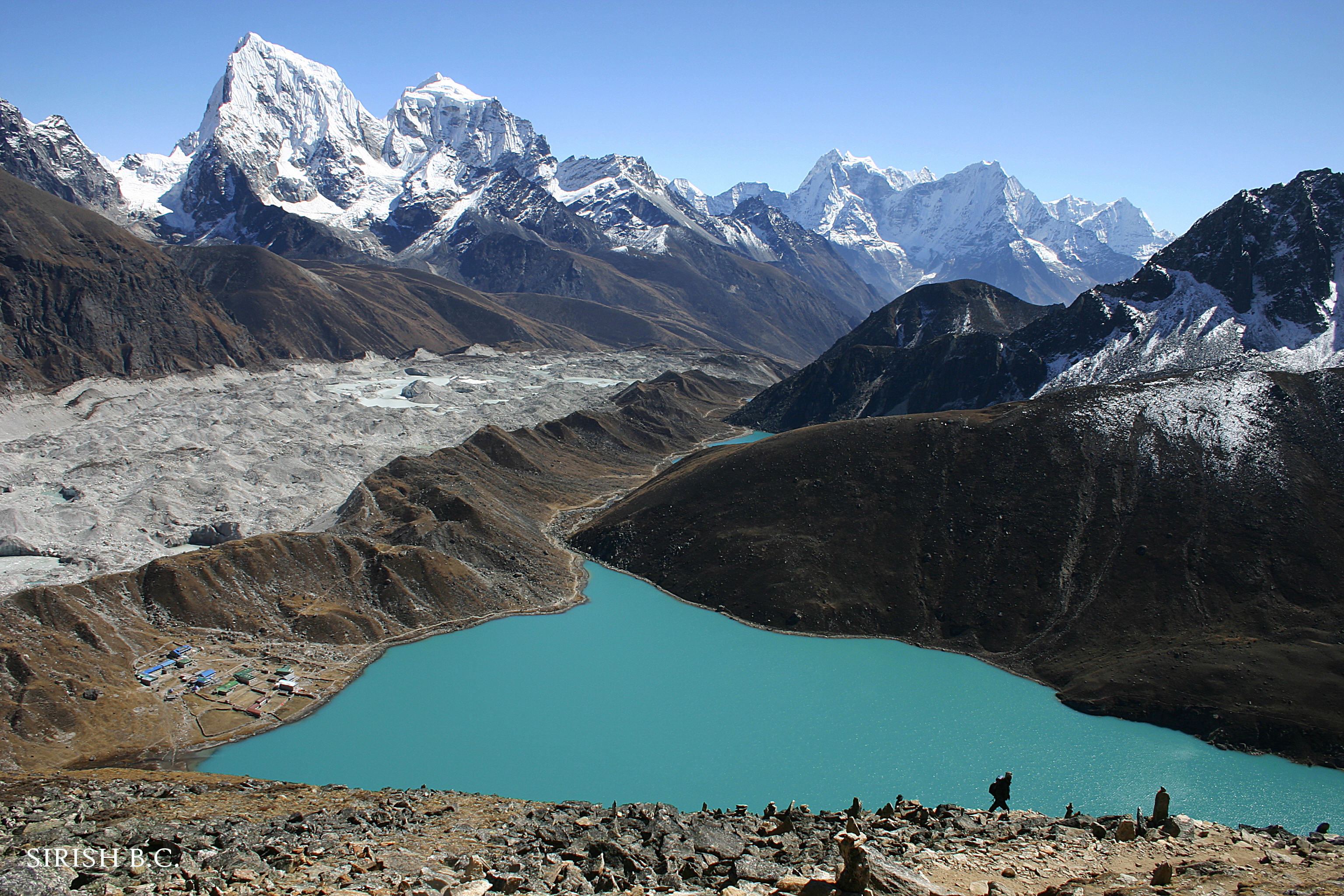
The Himalayas
This young mountain range boasts the beautiful Sagarmatha sky-head, Mount Everest. It has been given to a region of the world whose peoples are old in their ethnicity. What better home for either? Through our appreciation and visitation, that we care for both as kindly as we do our most beloved, may we climb safely, thoughtfully, and with utmost integrity- by foot or by dream.
_________________________________________________
About Nepal Photographer Sirish B.C.~ Originally from Kathmandu, Nepal, Sirish currently lives in Western Europe. You can see more of his photography online at Photography World’s: Sirish B.C. Photography .
Read another Photography World publication about the Himalayas, @
.
RESOURCES
1. Turner, R. L. (1931). सगर् sagar and माथा matha in: A comparative and etymological dictionary of the Nepali language. K. Paul, Trench, Trubner, London.
2. UNESCO website
3. Pidwirny, Michael (Sept. 6, 2014) Topic of Geology: http://www.eoearth.org/view/article/154714
4. Dewdney, John C., (last updated 02-16-2015) Russia: The Ural Mountains. http://www.britannica.com/EBchecked/topic/513251/Russia/38577/The-Ural-Mountains
5. Nature: Himalayas Facts by PBS (2011)
6. The official website of the Office of His Holiness the 14th Dalai Lama: http://www.dalailama.com/biography/questions–answers
7. GURUBACHARYA, Binaj. (March 2014) “As Everest Trash Problem Mounts, Nepal Says Litterbugs No Longer Welcome”. Huffington Post
8. Boren, Zachary Davies. (April 18, 2014) “Climbing Mount Everest: what you need to know:There may be too many people, too much rubbish, climbers fighting with sherpa guides, but Mount Everest remains a wonder of nature” The Telegraph
9. Arnette, Alan. Climbing: Everest Base Camp Trek FAQ alanarnette.com
10. The Himalayan Database: Expedition Archives by Elizabeth Hawley

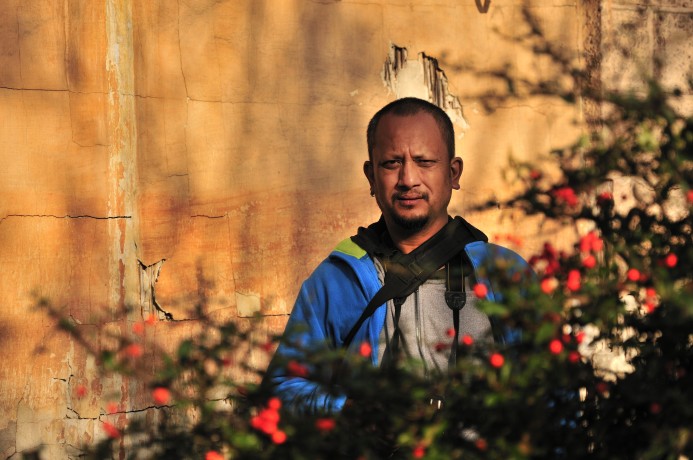
0 comments